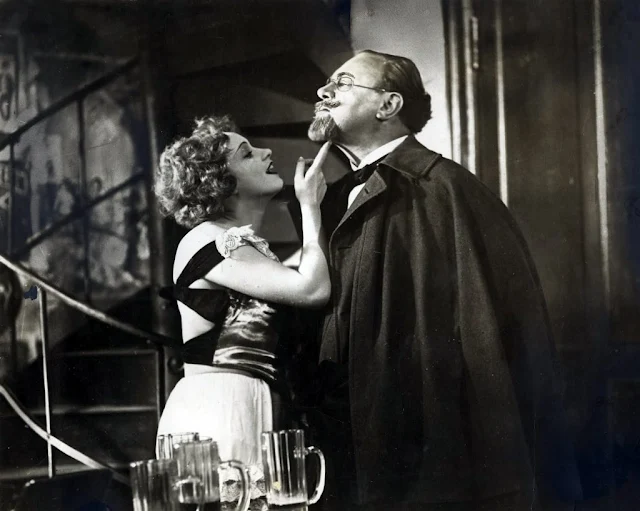 |
| Cary Grant and Marlene Dietrich in Blonde Venus |
Ned Faraday: Herbert Marshall
Nick Townsend: Cary Grant
Johnny Faraday: Dickie Moore
Ben Smith: Gene Morgan
Taxi Belle Hooper: Rita La Roy
Dan O'Connor: Robert Emmett O'Connor
Detective Wilson: Sidney Toler
Dr. Pierce: Morgan Wallace
Joe, a Hiker: Sterling Holloway
Cora: Hattie McDaniel
Director: Josef von Sternberg
Screenplay: Jules Furthman, S.K. Lauren, Josef von Sternberg
Cinematography: Bert Glennon
Art direction: Wiard Ihnen
Film editing: Josef von Sternberg
Costume design: Travis Banton
Music: W. Franke Harling, John Leipold, Paul Marquardt, Oscar Potoker
At once fascinating and perfectly ridiculous, Josef von Sternberg's Blonde Venus is a domestic melodrama with music and a bit of road movie thrown in. For most viewers it's chiefly of interest as an opportunity to see Cary Grant before the familiar "Cary Grant" persona had fully developed. He's a little rough around the edges still, slipping from an attempt at a fully American accent back into whatever his particular blend of British and American accent is, and his gift for looking faintly amused at absurd or difficult situations -- with which he's often confronted in Blond Venus -- hasn't quite emerged yet. At this stage of his career, he was little more than a useful leading man -- or second lead, in this film -- on the order of a John Lodge or a John Boles, there to show off the real star of the film, like Mae West in I'm No Angel (Wesley Ruggles, 1933) or Loretta Young in Born to Be Bad (Lowell Sherman, 1934) or Jean Harlow in Suzy (George Fitzmaurice, 1936). Or, of course, Marlene Dietrich, who is the reason Blonde Venus was made at all. Sternberg's obsession with Dietrich is on full display here as he crafts another story about a man willing to sacrifice his own love to make a woman in love with another man happy -- the role played by Adolphe Menjou in Morocco (1930) and here played by Grant, whose Nick Townsend, a rich playboy (he's identified as a "politician" in the screenplay, but we never see him either run for office or perform the duties of one), who gives up Dietrich's Helen Faraday twice: both times to let her return to her husband, played a little stodgily by Herbert Marshall. Of course, the real man in Helen's life is her son, Johnny, played by the terminally cute Dickie Moore. I like the way Sternberg both exploits and undercuts Moore's cuteness, as in the scene in which Johnny wears a hideous Halloween mask on the side of his head that's usually facing the camera. But then the whole film is full of Sternbergian tricks, such as the two amazing narrative jump cuts. The film opens with the meeting of Helen and Ned as he and some other hikers come upon her as she's swimming nude in a pond with her fellow chorus girls. She sends him away, though he discovers where she's performing before he goes. Cut from the girls splashing in the pond to Johnny splashing in a tub as Helen bathes him. Sternberg and his screenwriters omit what might have been a movie in itself: the second encounter of Helen and Ned, their courtship and marriage. Similarly, after much ado has reduced Helen to poverty and implied prostitution, there's a scene in which she gives a fellow derelict the $1500 Ned has paid her off with and goes off to, we assume, commit suicide -- or "make a hole in the water," as she has put it. Cut to a shot of an expanse of water, but then to a montage which tells us that Helen has resumed her career as a cabaret performer and has become the toast of Paris. Again, stuff that might have been almost an entire movie on its own has been (fortunately) elided. If Sternberg's tricks had been applied to a story that made more sense to start with, Blonde Venus might have been something of a classic. Instead, it's an extraordinary but often entertaining mess.







